Interview with artist Chris Hynes
“One man’s trash is another man’s treasure” – words to design by for Chris Hynes. As Chris says, his sculptures “juxtapose the ‘organic’ to inorganic by transitioning the form from natural ‘flesh’ to the cold harshness of man-made metal”. His sculptures created from found objects are maybe a little unsettling at first, but their graceful lines pull you in for a closer look and to explore. Chris’ work can be found at M2 Gallery in Little Rock, Red Door Gallery in North Little Rock and on Instagram @theartofchrishynes.
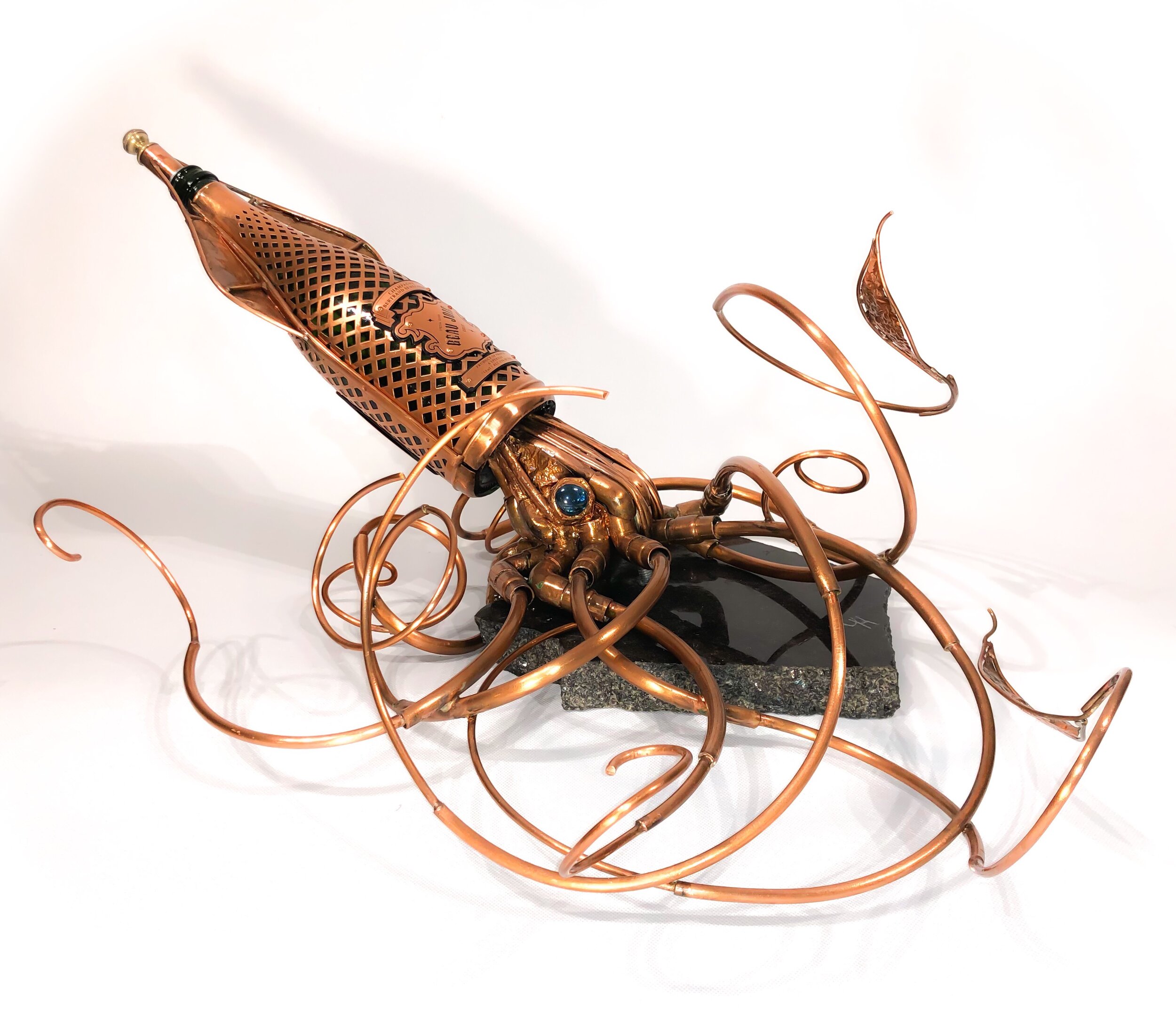

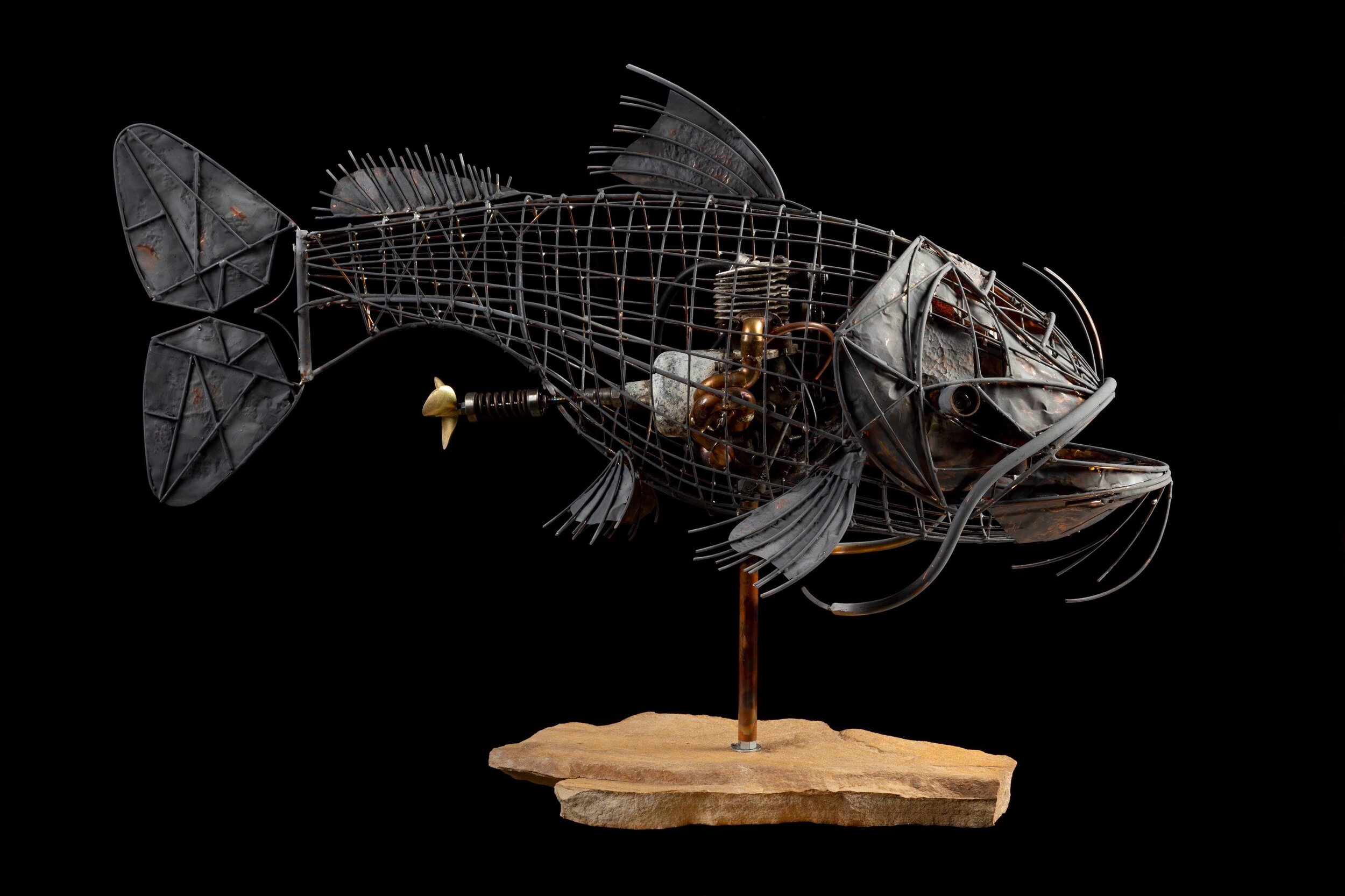

AAS: Chris, I believe you grew up in Little Rock. Would you talk about your background? Have you always enjoyed working with your hands?
CH: I was interested in art at a very early age and found drawing to be great fun. I came from a very artistic family. My brother is a concert pianist and my mother was a singer/songwriter and organist at Little Rock’s First Baptist Church. I worked at my high school newspaper as an artist and attended Arkansas State University where one of my electives was a figure drawing class with Evan Lindquist. My figure drawing class with Mr. Lindquist was my favorite and most memorable class while I was at ASU. He made art come to life in a way that was personal and meaningful to me. ASU was fortunate to have him be a guide to many young artists.
I finished my time at ASU with a degree in business with the intention of falling back on it in case I became a statistic. I then set my sights on the Ringling School of Art and Design in Sarasota, Florida.
AAS: I’ve been to the Ringling Museum in Sarasota. Is there a connection to the Ringling School of Art and Design?
CH: Yes there is a connection! John Ringling of the famed Ringling Bros. Circus and his wife Mable were tremendous benefactors of the arts and collected pieces throughout their lifetime. John was instrumental in establishing the Ringling School of Art and Design in Sarasota, which today is one of the premier art schools in the United States. It was during my time at Ringling that my focus began to drift from drawing/illustration to sculpture.
Chris in his home studio.
AAS: You do some remarkable work with metal? That does require some special skills, especially to create the stunning pieces you do – and to do it safely at the very least.
CH: Well, this is where my sculpture class at Ringling changed the course of my life, I suppose. The class was taught by a world-renowned sculptor named John Williams. One day, he gave us an assignment to go to the local junkyard and find things to make sculptures from. I happened to come across an old oily carburetor from a car along with some copper wire used in electrical construction. After some sketches, I decided that the parts should become a fish, since I was living on the gulf coast of Florida. The carburetor would become the “engine” of the beast while the copper wire would become the frame. The sad thing is that original piece from sometime circa 1998 wound up back in the junkyard because I had no room for it in my little apartment.
AAS: Where do you find your materials and do the materials let you know how they should be used in a particular animal?
Chris shopping for his art supplies.
CH: Today I still rely on the local scrap yards and recycling facilities to create these sculptures. I would say that sometimes I will go out with the idea ahead of the hunt. For instance, I recently created a deer and after some preliminary sketches, I went looking for parts. On other occasions, I may find a part in the junkyard that practically tells me what it should be. For example, one day I stumbled across an intake manifold from a car. When I looked at it closer, it had the Chrysler logo stamped on its side. Because of the size and shape of the piece, and the Chrysler/Plymouth connection to the famed muscle car, I knew that the piece was destined to become a Barracuda.
AAS: How long does it generally take to finish a piece?
CH: The timing to make these sculptures varies tremendously depending on the size and complexity of the piece. It is not uncommon for one of my sculptures to have over 100 hours invested. The time commitment from me translates to a piece that only the wealthiest can afford, but I have a few pieces available that can still be obtained without knocking over a liquor store (Ha!).
AAS: You recently started adding clay and paint to your sculptures. How did that come about? The juxtaposition of metal to ‘skin’ is striking.
CH: Thank you! The addition of clay actually came about from a bit of anger if truth be told. I heard second hand from one of my galleries that a customer had come in and loved my work. He stated that I was an excellent “craftsman” and he meant it as a sincere compliment. Not to knock craftsmanship, but the whole point of this to me was to be an artist and not a craftsman. At first, I was a little offended, but the more I thought about it, the more I realized the customer was right. I was making metal animals like any other metal artist. The pieces didn’t really have any sort of statement or meaning or purpose. They just—were.
Deconstruction, 24” x 17” x 9”, found objects and clay
AAS: You really captured the power of the rhino in Deconstruction. It reminds me a little of Arnold in the Terminator movies. Could you talk about that piece and your endangered species series?
CH: Lol! Thank you again! That piece is currently available in a gallery in Alberta, Canada. I was really focusing on creating works that had meaning and I have always been a fan of animal conservation. This subject became an obvious choice when I learned about the plight of the northern white rhino. Within the past few years, their numbers had dwindled down to two females and one male. Recently, the last male northern white rhino passed away leaving the species functionally extinct.
I wanted to explore this piece using clay as the “flesh” that transforms into the cold harshness of man-made metal. I believe there is a certain beauty in the act of time wasting away and decomposition which I tried to convey in this piece. I also try to give these pieces a sense of movement. I wanted the long “wires” that flow from the rhino’s back to be reminiscent of the dry winds of the savannah.
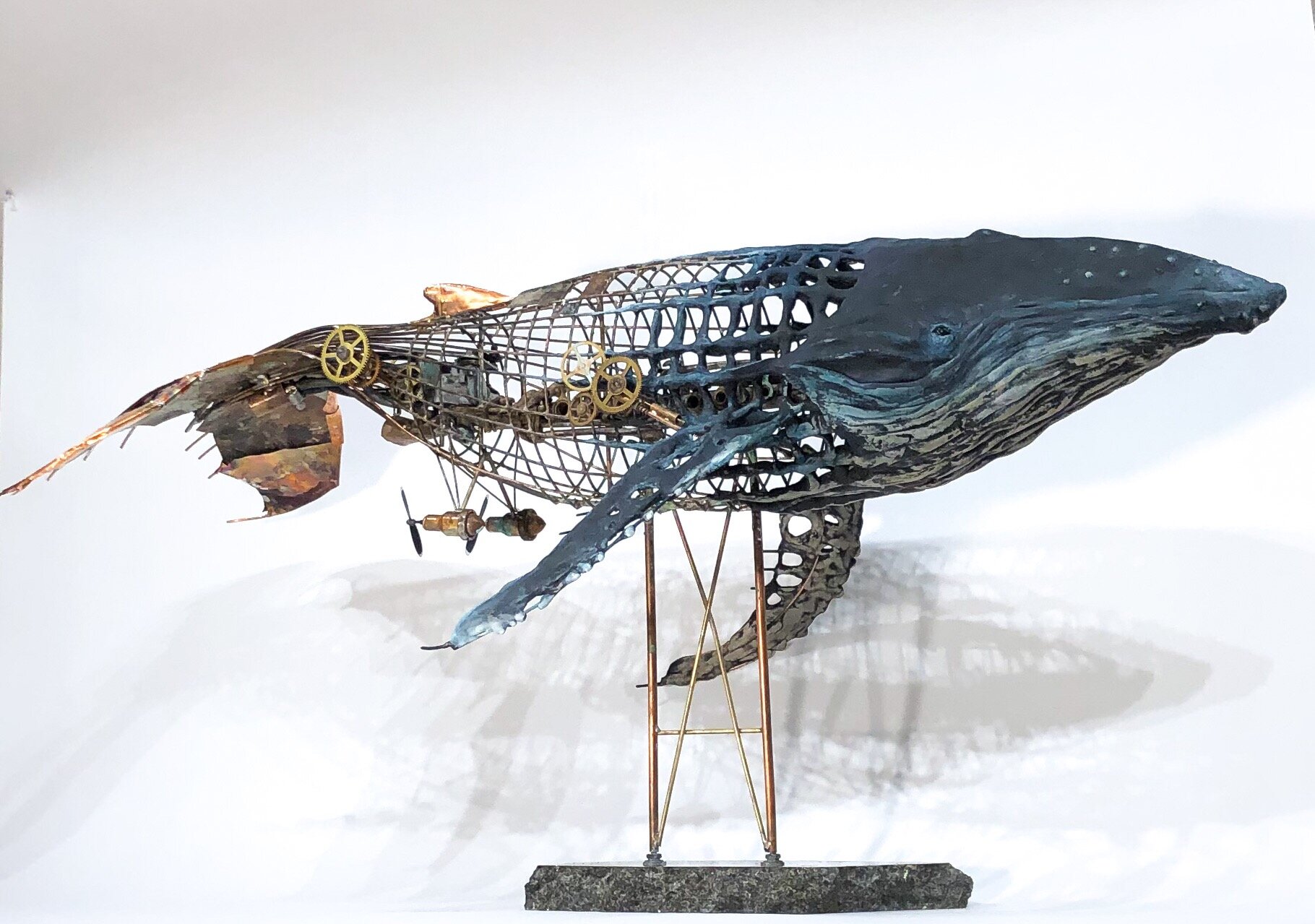
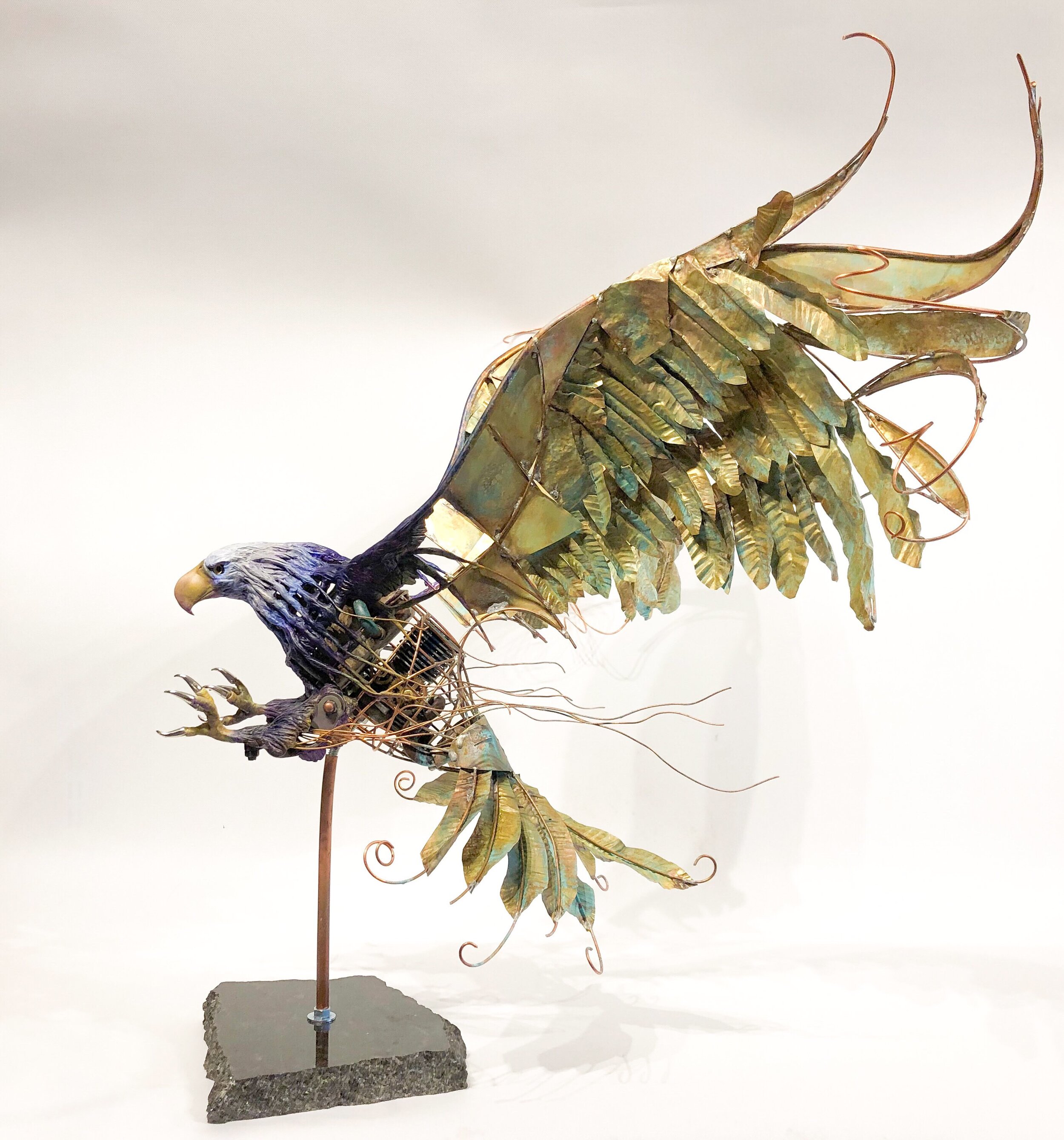
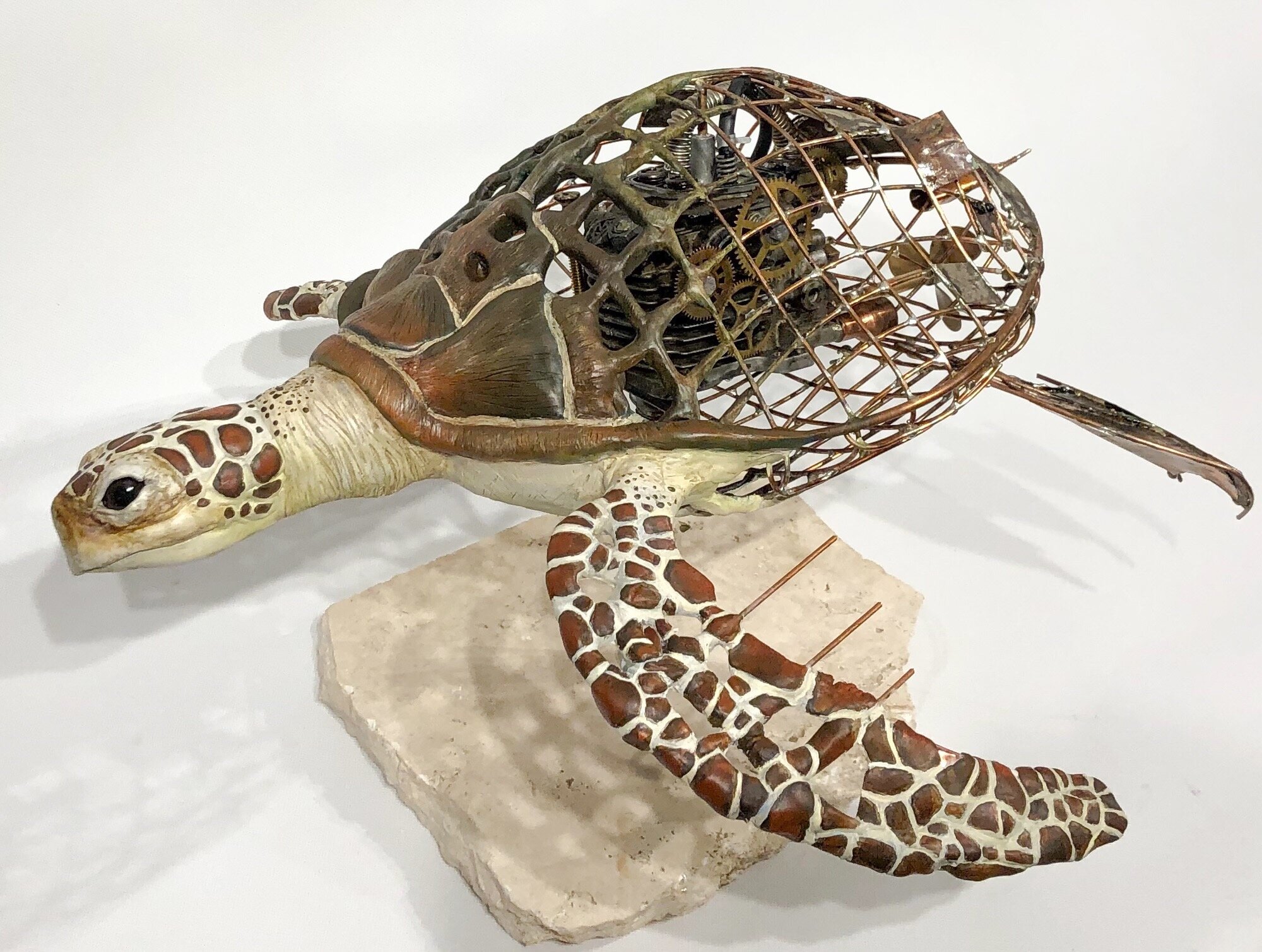
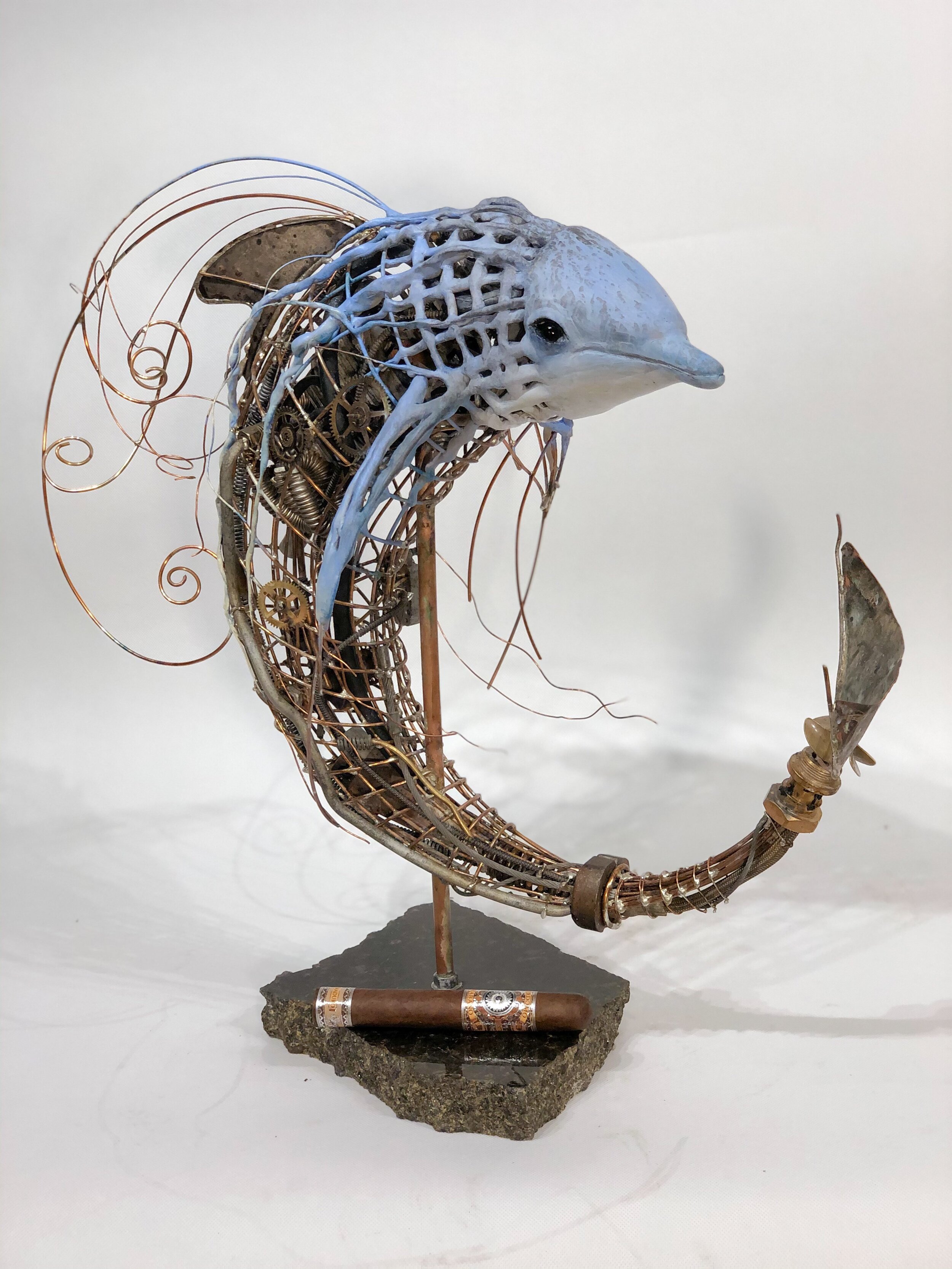
John Dory, 12” x 8” x 14”, found objects
AAS: I have always loved your sea creatures. John Dory is an early work and one of my favorites. What inspired that series?
CH: John Dory was my first sculpture on my return from Florida. Some years had passed, and I had fallen back on my business degree as it is much more reliable in making a comfortable living. However, you can’t take the art out of an artist, and I found myself wanting to explore this medium again. I opened up the phone book and found the junkyards that welcomed artists to explore their mountains of jagged rusty metal-minus a small legally binding agreement not to sue in the case of personal injury. This led to me getting serious about the work again which led to me making several pieces for the express purpose of getting them into local galleries.
Hummingbird In The Garden Of Pan, 27” x 10” x 28”, found objects and organ pipes
AAS: I must say that my favorite of yours is Hummingbird in the Garden of Pan. But of course, that is because it looks so perfect on our coffee table. Do you do many commissions?
CH: Once again, thank you so much! It’s funny, because when I started out in serious fashion, I told myself I would never do commissions. I believed that doing commissions was a waste of time, because it would take me away from working on the pieces that I thought were important or would be some defeating acknowledgement that I desperately needed patrons in order to be successful.
What I discovered was just the opposite. People want your work! They want a certain style that you bring to the table. It is the highest compliment that someone would think your work is worthy enough to ask you to use that talent or skill to make something personally meaningful to them.
The creation of Hummingbird In The Garden Of Pan.
Spirit, 20” x 20” x 28”, found objects and clay, 62nd Annual Delta Exhibition Contemporaries Award Winner
AAS: Your piece, Spirit, in the 2020 Delta Exhibition was honored with the Contemporaries Award. Have you been in the Delta before? How was that experience?
CH: I jokingly refer to this as beginner’s luck. I was incredibly honored to receive this award. I think it means so much more because it was a group effort rather than a single voice. I never would have dreamed that I would ever have even made it into the Delta, let alone win the prestigious Contemporaries Award. It is the highlight of my artistic career thus far, and if I could, I would thank each of them individually! It has opened up new doors for me as an artist including a gallery in Rome, Italy.
AAS: I know you are very busy as a sculpture artist, but what do you do for ‘fun’?
CH: I know I’m not known for this, but I love landscape painting. I prefer to work in oils, but I have dabbled in acrylic too. I love the beauty of Arkansas landscapes, and I think it’s a nice escape from the brutal practice of bending wire, propane torches, and constantly cutting yourself with rusty metal. I think if I had known how bruising metal sculpture would be, I would have never picked up a welding torch to begin with...but I’m glad I did.


